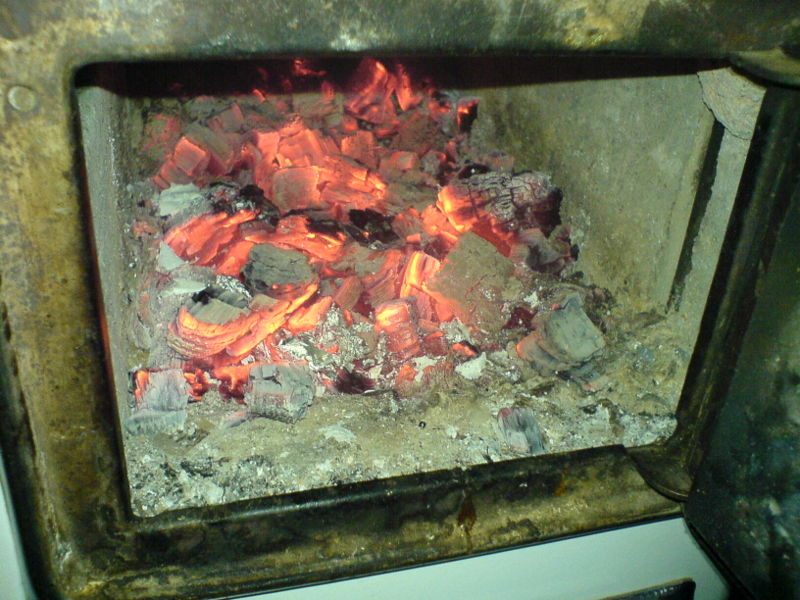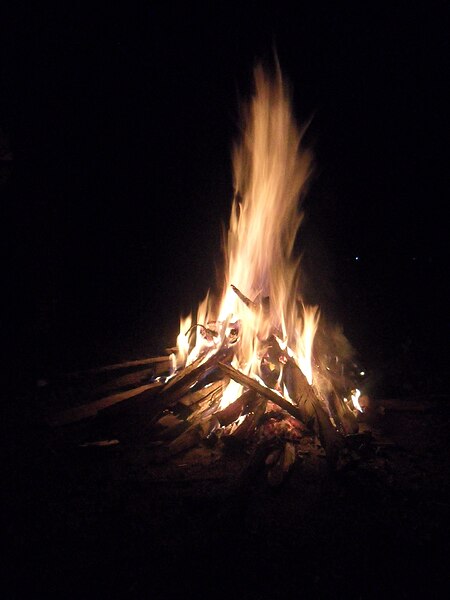I won't be talking about the stories you'll hear on television or read online or chat about at the office...I'm going to cover the story of the science. I'm going to explain what makes the Olympics physically possible.
My first entry will be the only one that doesn't deal directly with human biology (though one could argue that it touches upon it). In this post, I'm going to explain why the Olympic Flame shines, and why we care about that symbol so much. (As a hint for extra fun, feel free to read all these "Science of the Olympics" posts in David Attenborough's voice. Trust me, it's worth the effort.)
THE SCIENCE OF THE FLAME
When it comes down to it, the Olympic Flame is just the visible part of a controlled fire. Fire, in turn, is just the result of a chemical reaction.
Fire is something that's integral to our lives, yet few people really understand how it works. I think most people are at least aware that to start a fire, you need a fuel source, a heat source, and oxygen. But why, when those three come into combination, does it result in strange dancing flames, intense heat, and different colors?
Well, first of all, you don't really need pure oxygen to get a fire started; chemical compounds that contain oxygen can work just as well. Fire is the result of a chemical reaction. Oxygen reacts with a combustible substance, like wood, when that substance reaches a particular temperature. Wood at say, 70 degrees Fahrenheit sitting out in the forest isn't just going to burst into flames, even though it's surrounded by oxygen-containing air.
However, if the wood is heated to 300 degrees Fahrenheit, that's an entirely different story. At that point, its cellular material begins to break down, which releases volatile gases. The gas molecules break apart and mix with the oxygen from the air, which forms new molecules and a whole bunch of released energy, given off as more heat. Some of the material leftover is the carbon bits (the stuff that ISN'T volatile gases), which also eventually reacts with the oxygen, just much slower than the gases. You likely know this as charcoal.
A key thing to keep in mind is that in such reactions, energy is given off in the form of heat. So the heat increases during these reactions, which helps continue to produce even more reactions by breaking down even more material. Also, remember that everything beyond the reacting materials (say, the other stuff in the forest) is still at a lower temperature, including the air. Because of this, the molecules and atoms involved in the reaction rise up and float, since they are more spread out and less dense than everything else around them.
 |
| Charcoal is the carbon leftover after the volatile gases escape. |
Not every kind of matter will burn when it is heated up. Water, for instance, won't react with oxygen this way. Heat up water, and the water molecules stay as they are...they won't break apart and mix with the oxygen in the air. They'll just kick around as water vapor. So you really do need particular types of matter to act as proper fuel.
Speaking of matter, it's important also to understand that fire isn't a type of matter. Fire is a reaction. The flame you see is the light from the reaction. Light isn't matter. The heat you feel is from the reaction. Heat isn't matter. The colors you see are just a result of the temperature. Higher temperatures result in a blue hue because of the speed of the atoms, while lower temperatures have more of a red hue. All this is just energy, not matter.
Now, I've been using wood as the example, but the 2012 Olympic torch does not use wood as its fuel source. Instead, it uses a mixture of gases similar to the volatile gases released by wood. Therefore, the torch won't leave a trail of ashes behind, but will still have the ability to release energy in the form of heat and light. Simple enough.
So now that we understand how the Olympic Flame works, it's time to think about why we have it at all. Why a flame?
 This is where human biology comes in. Or rather, human psychology (which of course boils down to human biology in the end, anyway).
This is where human biology comes in. Or rather, human psychology (which of course boils down to human biology in the end, anyway).To understand our fascination with fire, we need to think back to what it symbolizes: warmth. Safety. Food.
Uniquely for our species, fire is not immediately something to be feared. We are wired to be captivated by it and want to experiment with it. (Think about it...how often do you need to tell human kids to leave fire alone, versus how often you need to go outside and chase birds or bats or any other animal away from your bonfire?)
Evolutionarily speaking, those of us humans who were not afraid to get close and work with fire were the ones who survived.
 As for the Olympic Flame itself...well, being captivated by big communal fires is burned into our genetics and hard-wired into our brains. We see a large controlled fire, and it's an unmistakable calling to come out from the dark and gather around it with our neighbors. In the case of the Olympics, however, our neighbors happen to be every other human on the planet.
As for the Olympic Flame itself...well, being captivated by big communal fires is burned into our genetics and hard-wired into our brains. We see a large controlled fire, and it's an unmistakable calling to come out from the dark and gather around it with our neighbors. In the case of the Olympics, however, our neighbors happen to be every other human on the planet.I find that rather poetic.
The Olympic Flame unites us in a way few other symbols could, because it reaches down and touches something inside us two million years in the making. Something that, when you really study it, isn't a "thing" at all. It's not matter. Fire is just energy. And if being called together by a common fascination with raw energy isn't embodying the Olympic Spirit, I don't know what is.
So let the Games begin!



No comments:
Post a Comment